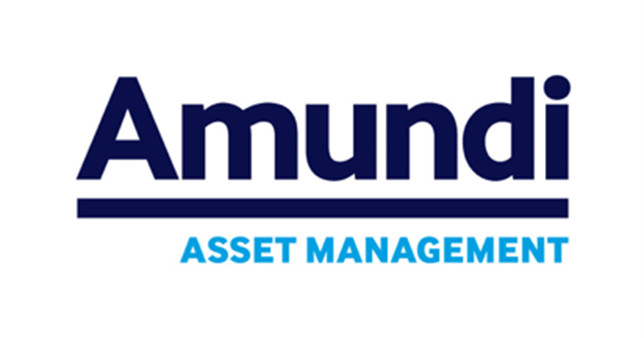
In this article, Tanguy TONEL (ESSEC Business School, Global BBA, 2019-2023) explains about convertible bonds.
Introduction
In the ever-evolving financial landscape, investors are constantly seeking new opportunities to diversify their portfolios and maximize returns. One such investment vehicle that has gained traction in recent years is the convertible bond. As a hybrid security, convertible bonds offer a unique blend of debt and equity features, providing investors with the potential for capital appreciation and income generation. In this article, we will delve into the world of convertible bonds, exploring their characteristics, types, and the benefits they offer to both investors and issuers.
What are Convertible Bonds
A convertible bond is a type of corporate bond that can be converted into a predetermined number of shares of common stock in the issuing company upon or before its maturity.
Like traditional corporate bonds, convertible bonds entitle their holders to coupon (interest) payments at regular intervals and can usually be redeemed for their par value (original price) upon maturity, assuming they were not already converted into shares.
Technically, convertible bonds are considered debt instruments until they are converted into shares. However, due to their ability to be converted into equity, most investors consider them hybrid securities.
Types of Convertible Bonds
Vanilla Convertible Bonds
These are the most common type of convertible bonds, allowing investors the option to convert their bonds into shares at a predetermined conversion price and rate during the bond’s lifetime.
Mandatory Convertible Bonds
Unlike vanilla convertible bonds, mandatory convertible bonds require the bondholder to convert their bonds into shares at the maturity date. This feature makes them more equity-like in nature.
Reverse Convertible Bonds
These bonds give the issuer the option to either buy back the bond in cash or convert the bond into equity at a predetermined conversion price and rate at the maturity date.
Risks
Also known as Public Investment in Private Equity (PIPE), convertible bonds allow companies that have difficulties securing financing with a more traditional approach to get funding more easily.
Nevertheless, convertible bonds can lead to significant dilution for investors if the funds holding them decide, or are forced, to convert the debt into equity as they usually purchase the debt at a discount. Convertible bonds can be seen as debt combined to an already “in the money” option for newly emitted shares. Through “OCEANE” bonds in France, companies might refund the bondholders with existing shares, but it happens less often than a refund with newly emitted shares.
The Hull precises that “When these instruments are exercised, the company issues more shares of its own stock and sells them to the option holder for the strike price. The exercise of the instruments therefore leads to an increase in the number of shares of the company’s stock that are outstanding.”. Indeed, a major risk for the old shareholders is dilution and an important decrease in the value of their shares if the bond issuance is used as a form of credit line rather than funding growth.
As it is a common source of funding for companies in difficulties, that risk tends to be significative.
Indeed, according to Les Echos, the AMF (Autorité des marchés financiers) scrutinized a sample of 69 companies, and among them 57 companies, or 83% of the sample, saw their stock prices decline, with an average decrease of 72%. The stock price of 20 of them, or 29% of the sample, has even lost more than 90%.Only 12 companies, or 17% of the sample, saw their stock price rise.
Conditions of exercise
Convertible bonds come with specific conditions for exercise, offering investors the flexibility to convert their bonds into a predetermined number of common shares of the issuing company.
The conditions typically include a conversion ratio, which specifies the number of shares the bondholder will receive for each convertible bond converted.
Additionally, there is usually a conversion price, which is the predetermined price at which the conversion occurs. Investors can choose to exercise their convertible bonds if the market price of the company’s common stock exceeds the conversion price, enabling them to benefit from the appreciation in the stock value.
The issuing company may also impose restrictions on when and how the conversion can take place, such as waiting until a certain period has passed since the issuance of the bonds. These conditions are designed to balance the interests of both the bondholder and the issuing company and provide a mechanism for investors to participate in potential upside movements in the company’s stock.
Example
A convertible bond is issued at a value of €1,000 at a ratio of 1 bond to 5 shares.
Five years later, the number of shares associated to this bond are worth €3,000, the bondholder claims his five shares. His benefit is €2,000 plus the yield of the bond for the 5 years.
If, five years later, the 5 shares are worth €200, the bondholder claims a refund in cash and his benefit is the yield of the bond.
It is to be noted that the investor is granted no voting rights before claiming shares against his bond.
Also, in the case of mandatory convertible bonds, the investor will incur a loss of (1000-200) €800 and will get 5 shares now worth €200.
Why should I be interested in this post?
Small caps can offer larger returns than large caps which may attract the retail investor desiring to beat the market. Nevertheless, some companies abuse this financing method, generating unwanted risk that mainly hurts the investors. Therefore, it is important to be aware of the opportunities offered by those alternative investment vehicles while keeping in mind the associated risks.
Related posts on the SimTrade blog
▶ Georges WAUBERT Introduction to bonds
▶ Jayati WALIA Fixed-income products
▶ Georges WAUBERTHow does the stock price of a firm change according to the shift of its capital structure?
▶ Louis DETALLE A quick review of the DCM (Debt Capital Market) analyst’s job…
▶ Louis DETALLE A quick review of the ECM (Equity Capital Market) analyst’s job…
Useful resources
Hull J.C. (2021) Options, Futures, and Other Derivatives Pearson, 11th Edition.
Elbadraoui, Khalid & Lilti, Jean-Jacques & Mzali, Bouchra. (2008) La Performance Opérationnelle à Long Terme des Entreprises Françaises Émettrices d’Obligations Convertibles. Revue Finance Contrôle Stratégie 11, 125-154.
U.S. Securities and Exchange Commission (SEC) Private Investment in Public Equity (PIPE).
C.P. (18 octobre 2022) L’AMF met à nouveau en garde contre les OCABSA.
About the author
The article was written in June 2023 by Tanguy TONEL (ESSEC Business School, Global BBA, 2019-2023).


